Definition
Diverticulitis is small outpouchings in your large bowel are very common in patients over age 50, a condition known as diverticulosis. This usually causes no symptoms. Diverticulitis occurs when one of those pouches becomes inflamed and/or infected. This most commonly involves a lower part of your bowel called the sigmoid colon.
When a pouch is inflamed, it usually causes pain and tenderness in the lower left abdomen. Left untreated, it can worsen and lead to an abscess or bowel obstruction. It can also create a hole in your colon that connects to other structures, such as your bladder or other parts of your intestines. This connection is called a fistula. Sometimes, inflammation irritates nearby blood vessels and causes bleeding into the large bowel. This is rare and will usually present with a large amount of red or maroon color stool. Repeated episodes of diverticulitis can cause scarring which can narrow the large bowel and cause an obstruction.
Doctors do not know the exact cause of diverticulitis. Studies link it to obesity, lack of exercise, smoking, and certain medications. These medications include steroids and nonsteroidal anti-inflammatory drugs (NSAIDs), such as aspirin and ibuprofen. The condition is more common in men than in women. Your risk for the condition increases after age 50.
Epidemiology
Diverticular disease occurs more frequently in Western countries but continues to increase worldwide. Why the diverticular disease is less common in underdeveloped countries is unclear, but it is presumably secondary to lifestyle and dietary factors. For example, the prevalence of diverticulosis increased in Japan after its population adopted a more Western lifestyle.
Diverticulitis involving the left colon typically affects false diverticula, which are also usually found in Western populations. Right-sided and cecal diverticulitis (involving true diverticula) are more prevalent in the Asian population, accounting for up to 75% of cases of diverticulitis in this group.
Age and sex-related demographics
The incidence of diverticular disease increases with age (>65% in those >85 years). Most patients with diverticulitis are older than 50 years; the mean age at presentation appears to be about 60 years. However, diverticulitis is increasingly being seen in younger persons.
Although a male preponderance was noted in early series, subsequent studies have suggested either an equal sex distribution or a female preponderance.
In those younger than 50 years, diverticulitis is more common in men; a slight female preponderance exists between the ages of 50 and 70 years, and there is a marked female preponderance in those older than 70 years.
Risk factors of Diverticulitis
Several factors may increase your risk of developing diverticulitis:
Aging: The incidence of diverticulitis increases with age.
Obesity: Being seriously overweight increases your odds of developing diverticulitis.
Smoking: People who smoke cigarettes are more likely than non-smokers to experience diverticulitis.
Lack of exercise: Vigorous exercise appears to lower your risk of diverticulitis.
Diet high in animal fat and low in fiber: A low-fiber diet in combination with a high intake of animal fat seems to increase risk, although the role of low fiber alone isn’t clear.
Certain medications: Several drugs are associated with an increased risk of diverticulitis, including steroids, opioids and nonsteroidal anti-inflammatory drugs, such as ibuprofen (Advil, Motrin IB, others) and naproxen sodium (Aleve).
Diverticulitis causes
- Although not proven, the main cause of the diverticular disease is believed to be a low-fiber diet. Fiber is the part of fruits, vegetables, and grains that the body cannot digest.
- Soluble fiber dissolves easily in water and takes on a soft, jelly-like texture in the intestines.
- Insoluble fiber passes almost unchanged through the intestines.
- Both kinds of fiber help make stools soft and easy to pass, which helps to prevent constipation.
- Constipation is the main cause of increased pressure in the colon, making the muscles strain to move stool that is too hard. The excess pressure caused by the straining makes the weak spots in the colon bulge out, forming diverticula.
- Doctors do not know what causes the infection that causes diverticulitis, but believe it may begin when stool or bacteria are caught in the diverticula
Symptoms of Diverticulitis
When you have diverticulitis, the inflamed pouches most often cause pain in the lower-left side of your abdomen. The pain is usually severe and comes on suddenly, though it can also be mild and get worse over several days. The intensity of the pain can change over time.
While diverticulosis doesn’t present symptoms, there are clear warning signs of diverticulitis. Those include:
- Abdominal pain or tenderness
- Change in bowel habits
- Fever
- Chills
- Nausea and vomiting
- Frequent urination
- Loss of appetite
- Constipation
- Diarrhea
- Bloating
- Rectal bleeding
Although some of these symptoms overlap with other gastrointestinal problems, including peptic ulcers and irritable bowel syndrome (IBS), consult your doctor if you have any of these symptoms and the aforementioned risk factors apply to you.
Diverticulitis complications
If you don’t treat it, diverticulitis can lead to serious complications that require surgery:
Abscesses, collections of pus from the infection, may form around the infected diverticula. If these go through the intestinal wall, you could get peritonitis. This infection can be fatal. You’ll need treatment right away.
Perforation or tear in the intestinal wall can lead to abscesses and infection because of waste leaking into the abdominal cavity.
Scarring can lead to a stricture or blockage of the intestine.
Fistulas can develop if an infected diverticulum reaches a nearby organ and forms a connection. This most often happens between the large intestine and the bladder. It can lead to a kidney infection. Fistulas can also form between the large intestine and either the skin or the vagina.
If you have severe bleeding, you may need a blood transfusion.
Diagnosis and test
Diverticulitis symptoms can be similar to those of colitis (the larger segment of colon inflammation). Diverticulitis usually causes pain in the lower left part of your abdomen while appendicitis usually causes pain in the lower right part of your abdomen. Timely, accurate diagnosis is very important because treatments for these conditions differ. Your doctor may diagnose your condition using:
Abdominal and Pelvic CT: A CT scan is the best test to diagnose diverticulitis. It can also help determine the severity of the condition and guide treatment. You may receive an intravenous (IV) injection of contrast material. You may also drink an oral contrast material one hour before your scan. Both materials help the radiologist to better see your intestines and abdominal organs.
Colonoscopy: A small camera views the colon’s interior to see the inflamed, infected pouches.
Diverticulitis (pouches) is seen in the wall of the large intestine
Ultrasound-Pelvis: Ultrasound creates pictures of the abdominal organs without using ionizing radiation. However, ultrasound images lack the detail of CT images and cannot evaluate the intestines as well as CT.
X-ray-Lower GI tract: Your doctor may use the x-ray to assess for complications from diverticulitis.
Blood and urine tests: Blood tests look for signs of infection and/or inflammation. These signs may include high white blood cell counts.
Pregnancy test: If you are of childbearing age, your doctor may ask you to take a pregnancy test. This will help rule out pregnancy as a cause of abdominal pain.
Treatment
Diverticulitis is often a medical emergency, requiring immediate medical attention and, frequently, admission to the hospital. Mild attacks can be treated at home, but should always be assessed promptly. Treatment may include:
- No eating or drinking – intravenous fluids are given to rest the bowel
- Antibiotics
- Pain-relieving medication
- Surgery- if the weakened sections of the bowel wall have ruptured or become obstructed, or if the attack of infection fails to settle
- Colostomy – if it isn’t possible to re-join the healthy sections of the bowel, a colostomy bag will be fitted. This is more common if the surgery is performed as an emergency. The use of a colostomy is generally temporary and the bowel can be re-joined after six to 12 months if health permits
- The long-term use of a mild antibiotic- is often necessary to prevent further attacks.
Types of diverticulitis surgery
A person will undergo this surgery under general anesthesia, which means that they will be unconscious.
The right surgical technique depends on the location of the diverticulitis in the colon, the individual’s overall health, and a surgeon’s comfort and experience.
Common types of diverticulitis surgery include:
Laparoscopic surgery
This is minimally invasive and typically requires 3 to 5 small cuts in the abdomen, while traditional surgery involves one large incision.
Colon resection
This is the most common type of surgery for diverticulitis. A surgeon cuts into the colon, removes the damaged pockets or pouches, then reattaches the remaining segments of the colon. The surgeon may reattach the colon to the rectum or create a colostomy. A colostomy is a small hole that allows stool to exit through the stomach and requires the person to use a colostomy bag. While people usually prefer not to have a colostomy, reattaching the colon to the rectum can fail and require a subsequent surgery.
Loop ileostomy
This also involves removing the infected segment of the colon. The surgeon will then create a temporary hole in the abdomen for waste to pass through, using a piece of the small intestine. This passageway is called a stoma. A few months later, the surgeon will remove the stoma and reconnect the intestines, allowing stool to pass normally. Loop ileostomy can be a good alternative for people who want to avoid having a colostomy. However, because it involves two surgeries, it carries a higher risk.
Laparoscopic washout
Laparoscopic washout is a newer technique. A surgeon will examine the stomach and colon, drain any swelling and pus, and wash the abdomen. This can kill the infection, prevent the abdomen from swelling, and remove the need for resection. This technique is common among people with an infection or hole in the colon. However, because laparoscopic washout involves leaving the damaged portion of the colon in the body, the risk of future attacks is increased.
Prevention of Diverticulitis
Exercise regularly: Exercise promotes normal bowel function and reduces pressure inside your colon. Endeavor to practice no less than 30 minutes on generally days.
Eat more fiber: High-fiber nourishments, for example, food is grown from the ground and entire grains, relax squander material and enable it to go all the more rapidly through your colon. This diminishes pressure inside your stomach related tract.
Drink plenty of fluids: Fiber works by engrossing water and expanding the delicate, cumbersome waste in your colon. In any case, in the event that you don’t drink enough fluid to supplant what’s consumed, fiber can be constipating.
 Diseases Treatments Dictionary This is complete solution to read all diseases treatments Which covers Prevention, Causes, Symptoms, Medical Terms, Drugs, Prescription, Natural Remedies with cures and Treatments. Most of the common diseases were listed in names, split with categories.
Diseases Treatments Dictionary This is complete solution to read all diseases treatments Which covers Prevention, Causes, Symptoms, Medical Terms, Drugs, Prescription, Natural Remedies with cures and Treatments. Most of the common diseases were listed in names, split with categories.
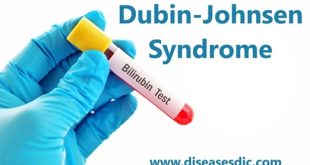

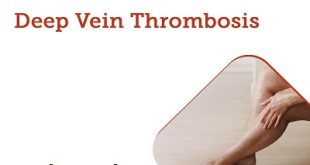
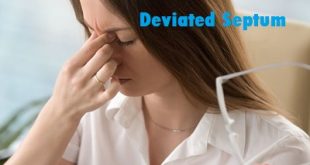

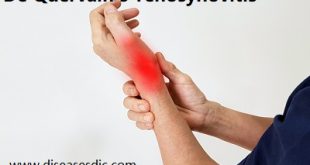
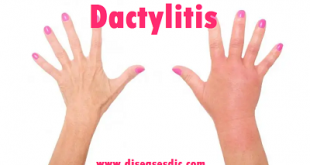

All the signs and symptoms mentioned above I have them. please advise me what to do
Please consult a gastroenterologist.